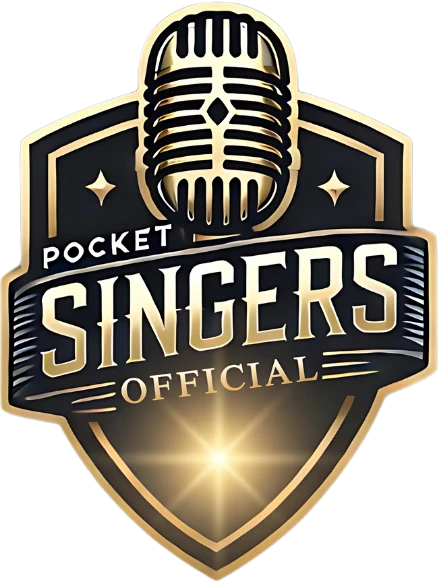Introduction
Hey Pocket Singers! Today, I’m diving into one of the most iconic microphones in the music industry – the Shure SM7B. If you’ve been following my journey, you know how passionate I am about helping you sound your best, whether in practice or performance. The right equipment can make a significant difference in capturing your true voice, and the SM7B has quite the reputation. But is it actually worth the investment for singers at different levels? Let’s break it down in a way that makes sense for our vocal community.
What Makes the Shure SM7B Special?
The Shure SM7B isn’t just another microphone – it’s a piece of music history. This dynamic microphone has been around since the 1970s (evolving from the SM7 that was allegedly used to record Michael Jackson’s “Thriller”). When something stays relevant for that long, there’s usually good reason.
The SM7B features a cardioid polar pattern, which means it primarily captures sound from the front while rejecting noise from the sides and rear. This is ideal for singers who practice or record in less-than-perfect acoustic environments (which, let’s be honest, is most of us!).
Technical Specifications Simplified
Let’s cut through the technical jargon and focus on what matters for us as singers:
- Frequency Response: 50 Hz to 20 kHz – this covers the full range of the human voice beautifully
- Connections: XLR connection (requires an audio interface)
- Built-in Features: Includes both a windscreen and pop filter
- Sound Customization: Has switches for bass roll-off and presence boost on the back of the mic
How Does It Actually Sound for Vocalists?
What I love about the SM7B is its warmth and natural sound reproduction. It tends to emphasize the lower frequencies, giving vocals a rich, full-bodied quality. This can be particularly flattering for singers who find their voice lacks natural warmth or depth.
The SM7B is remarkably forgiving when it comes to placement. You don’t need to be precisely positioned for it to capture your voice effectively – a huge advantage for singers who move naturally while performing.
For those who find the microphone too bass-heavy, the built-in bass cut switch can help balance the sound without needing external processing. Similarly, the presence boost can add clarity to vocals that need more definition in the upper frequencies.
The Power Requirements – An Important Consideration
One crucial factor that many new SM7B users don’t anticipate is that this microphone requires a significant amount of gain. In simple terms, you’ll need a high-quality preamp or audio interface with plenty of clean gain to properly power this microphone.
Many users opt to add a Cloudlifter or Fethead (external gain boosters) to get the best performance. Alternatively, the newer SM7dB model comes with an integrated preamplifier, though at a higher price point.
Is the SM7B Right for Your Singing Journey?
Consider the SM7B if:
- You’re recording vocals in a space with some background noise
- You want a microphone that will last for decades
- You’re looking for a warm, radio-quality sound
- You have the budget for both the microphone and a quality interface/preamp
- You’re serious about recording vocals, podcasts, or streaming
Consider alternatives if:
- You’re just starting your singing journey
- You have a limited budget
- You need a simple USB plug-and-play solution
- You prefer brighter, more detailed vocal reproduction
Final Thoughts
The Shure SM7B isn’t just a microphone – it’s an investment in your vocal journey. Its legendary status is well-deserved, but that doesn’t automatically make it the right choice for everyone.
As with all aspects of singing, the most important thing is finding tools that work for your unique voice and situation. If you’re serious about recording and have the supporting equipment to make it shine, the SM7B could be a lifelong companion on your vocal journey. If you’re just starting out, you might want to begin with something more accessible and upgrade later.
Remember, even the best microphone can’t replace proper vocal technique – so keep practicing those placement exercises, working on your support, and developing your authentic voice!
What microphones do you use in your practice and recording? I’d love to hear about your experiences in the comments below!
Keep singing, Zane
